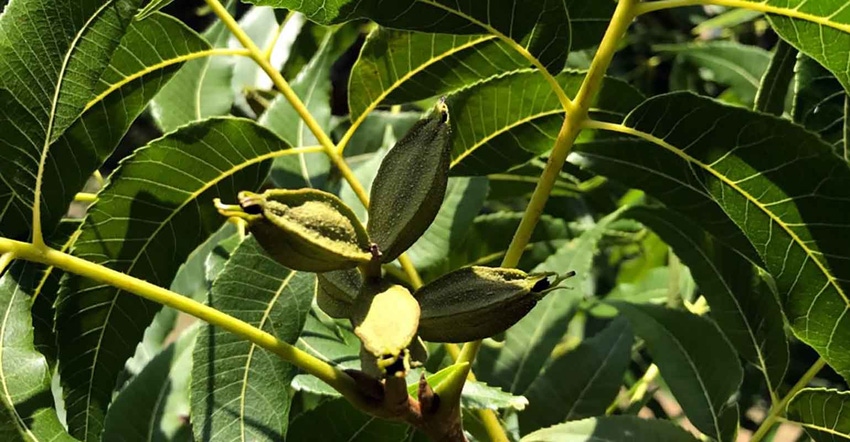
The extreme temperatures we are seeing has growers concerned about effects on the trees and crop. These temperatures often entice growers to increase their irrigation rates over that which they would normally apply at this time of year. But, pecans do not respond to heat in the same way that we do.
Pecan trees are highly adaptable, something which should be obvious when considering the broad range of conditions in which they grow in their native habitat from as far south as Oaxaca, Mexico to Illinois/Iowa. This provides a lot of room for error and makes them capable of producing a good crop, even under extreme conditions—-as long as they have the right amount of water.
Research has demonstrated that photosynthesis in pecan can continue unimpeded at leaf temperatures as high as 106 degrees as long as soil moisture is adequate (Andersen and Brodbeck, 1988). Pecan trees “breathe” through the stomates or little holes in the leaf surface. As long as these stomates remain open, photosythesis occurs and the tree does all the things it needs to do to produce a crop.
Given adequate soil moisture, the hydraulic system of pecan trees was able to maintian leaf turgor and full stomatal opening of leaves under extremely high temperature,, exceeding the range for most woody perennials. This means that pecans can avoid closing of the stomata (allowing photosythesis to continue) under atmospheric conditions conducive to a high water deficit, as long as there is adequate soil moisture. Interestingly, expanding summer-flush leaves are more sensitive to water stress than mature leaves.
I tell you all this to let you know there is no need to panic and over-apply irrigation to pecans under our current heat wave and drought. Just continue on the normal recommended irrigation schedule below and you will be able to size the nuts properly.
On loamy sands, young trees (1-3 yrs) should generally get 100 gallons per tree per week. This should be distributed over the week by irrigating every other day. Drip irrigated trees should get 50 gallons per week. It is important to distribute this evenly over time. You want to maintain consistent soil moisture. Even on days in which you are not irrigating, you should still easily find the soil moist to the touch. Watering really heavy a couple days a week and letting it get bone dry in-between encourages problems.
Young trees on deep sand soils need a little more and should probably get water daily (3-4 hrs per day). Heavy clay soils retain more water but get rock hard when dry. Water these soils about twice per week at 4 hrs each time for young trees.
Source: UGA Extension, which is solely responsible for the information provided and is wholly owned by the source. Informa Business Media and all its subsidiaries are not responsible for any of the content contained in this information asset.
About the Author(s)
You May Also Like




